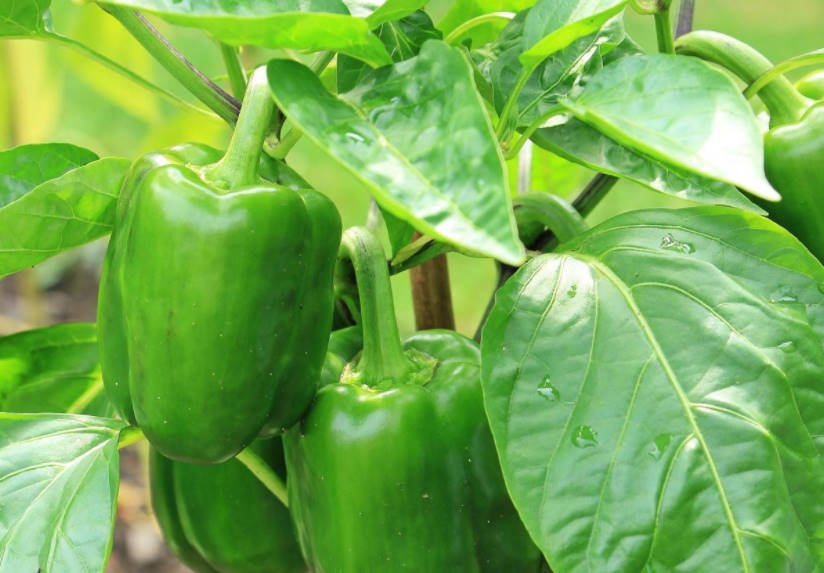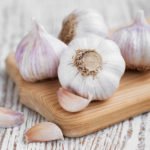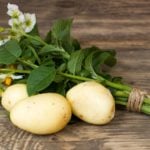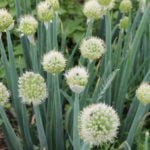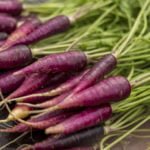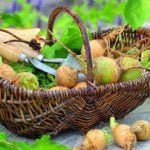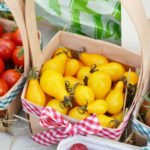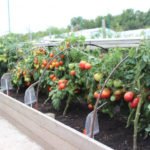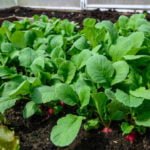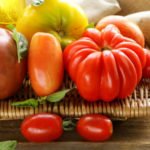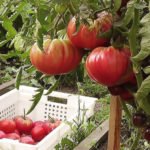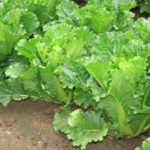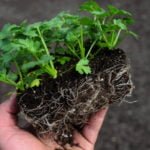Pepper does not like the slightest damage to the roots, since they are long restored when the sucking hairs break, and therefore it does not tolerate transplantation, especially at an early age. Pepper does not like to be buried during transplants. Does not like clay, acidic soil (and therefore does not like peat), does not like fresh manure and excess nitrogen, increased doses of mineral fertilizers, thickened planting, high temperatures in the greenhouse (above +35°C), sharp temperature changes (more than 15°C), watering with cold water (below +20°C), direct sun at noon. Such here is exacting a plant.
What to look for when growing pepper seedlings
The height of the container for seedlings should be about 10-12 cm, because the sowing of pepper is done to a greater depth than the tomato.
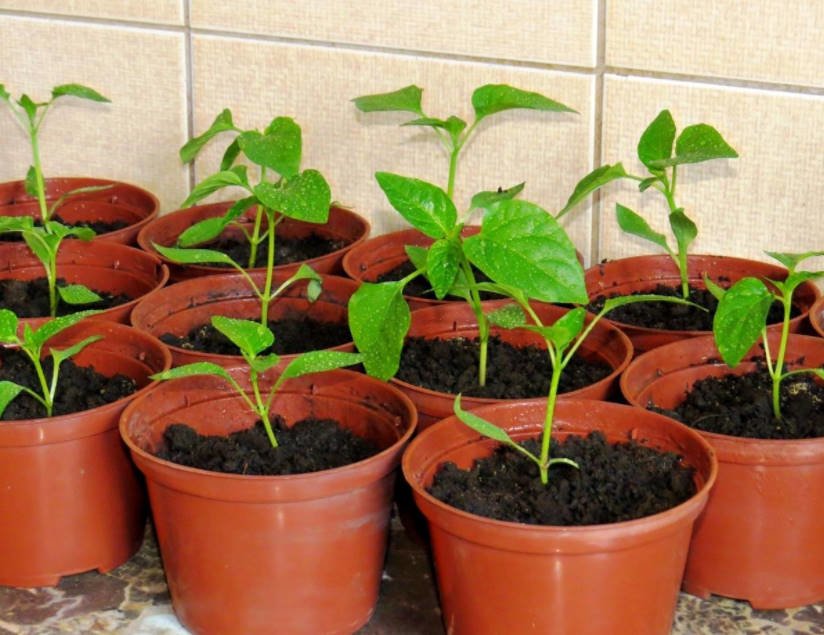
The size of the capacity for pepper seedlings is very important
Varieties or hybrids should be chosen based on your climatic conditions. In areas with a cool or short summer should be planted undersized varieties or hybrids. But if you have a good greenhouse, then on insulated soil or when heated, you can grow high and large-fruited and thick-walled hybrids, usually late-maturing and mostly foreign selection. In these cases, seedlings at the age of 75 days can be transplanted early.
The nuances of sowing
Seeds will have to be sown in mid-February, and for the southern regions — in mid-January. Then the large peppers, which for ripening takes about 150 days, will have time to harvest in July. Where the spring is long and the weather is cloudy until March (for example, in the North-West), do not plant peppers in January. Until the sun comes, the seedlings of peppers will not release the first real leaf, no matter how much you light it. And will stand with cotyledon leaves for an extra month. And it will have a bad impact on the harvest.
Pepper seeds are difficult to swell and poorly germinate, so they need to be stimulated. To do this, hold them in a thermos for 20 minutes in water heated to +53°C, then wrap in a damp cloth and put on a saucer under the freezer refrigerator for a few hours, then immediately sow.
Before sowing, fill the container with well-moistened soil at half height, seal with a tablespoon, spread the seeds according to the scheme 2×2 cm and sprinkle the soil on top of the height 5 cm, then seal. Seeds should be sown to a depth of 3-4 cm. The fact that the pepper can not be buried when picking and transplanting, because it can cause rotting of the buried part of the stem. Therefore, it should be planted immediately to a greater depth, otherwise the root system is formed too close to the surface, and the Bush will fall in the future. Containers should be covered with glass or film and put in a warm place. You can pre-germinate the seeds in a warm place and then decompose them in a container.
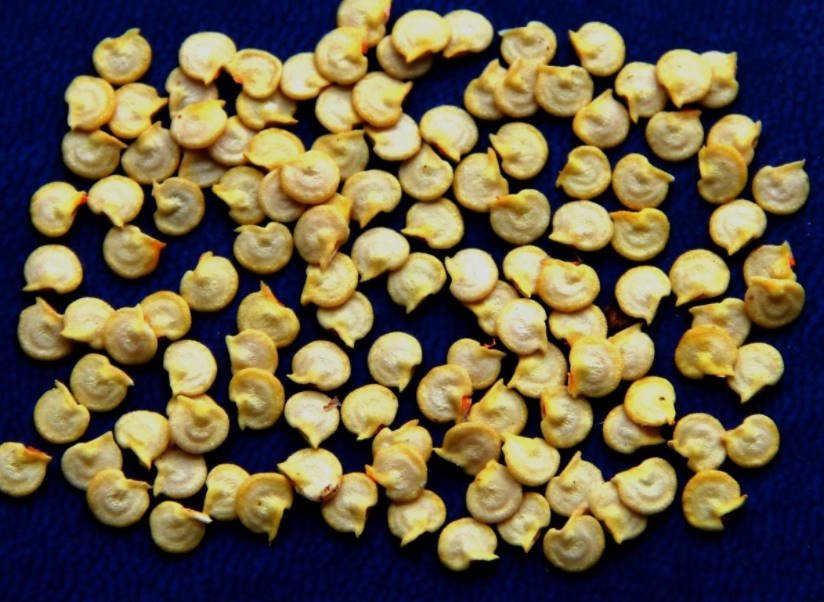
Pepper seeds
Pepper can be forced to ascend very quickly, on the 6-7 th day, if you maintain the temperature of the soil + 28…+32°C. you Can not raise it above + 36…+40°C-seeds will lose germination at long-term high temperature. If the soil temperature is reduced to +25…+27°C, the pepper will rise to 14-15 days. At a temperature of about + 22°C, it will take about 20 days for shoots to appear. Pepper may not come up at all at a temperature below +20°C, and at a lower — seeds generally rot.
Seedling care
As soon as the first loop shoots, without waiting for the appearance of the rest, immediately put the container under the fluorescent lamp and reduce the temperature to +16…+18°C. if you wait for the other shoots, the subfamily knee of the ascended — the strongest-plants will stretch out strongly, the seedlings will be stocky and deliberately weak. After 4-5 days, the temperature should be increased to + 22…+25°C.
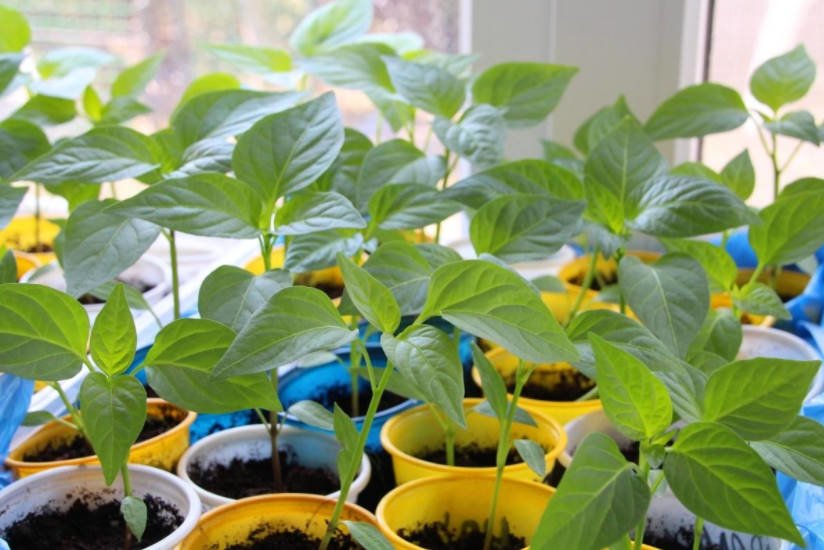
Pepper seedling loves heat and light
Pepper thermophilic, it can not be put on the windowsill near the glass. At the same time, it is very light-loving, although it does not stretch like a tomato with a lack of lighting. He had the disclosure of cotyledon leaves in the growing point is laid in the development program. With insufficient light at this moment instead of the fork, which laid the first Bud, will be laid leaves, that is, in the future will be delayed budding and fruiting.
Feeding should begin as soon as the cotyledon leaves are revealed. It is best not to water, and a weak solution of liquid fertilizer, which includes nitrogen, phosphorus, high doses of potassium and trace elements. You can use other fertilizers. In the initial period of growth is not necessary to make organic fertilizing, because the plant will begin to give too much of the above-ground part to the detriment of the root system.
How to dive pepper
When picking seedlings, the main thing is not to damage the root system. First of all, pour the soil well, it is easier to remove the plant from the dirt without damage. Prepare pots or cups for seedlings. They should have holes for excess moisture and air — that is, drainage holes should be made not only at the bottom but also at the bottom of the side surface.
Fill the pots with prepared soil, seal, pour well, make a funnel and carefully lower the seedling into it so as not to bend and not to damage the root. In pepper in any case do not shorten the Central spine. The plant is not buried, it is planted to the same depth at which it grew. Now you need to gently compress the soil around the stem and pour the nutrient solution of a teaspoon.
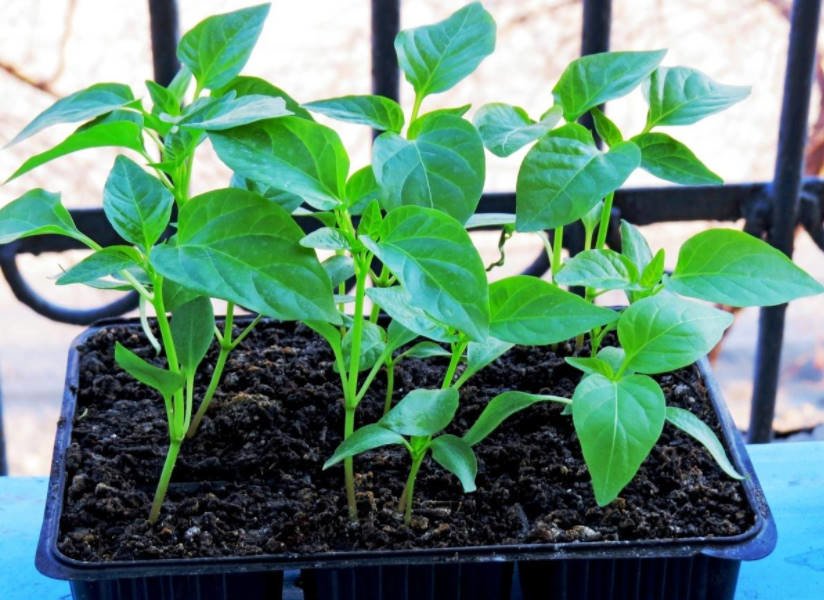
The older the pepper, the easier it will endure the transplant
Do not rush to transplant pepper: the older it is, the easier it will be to transplant (about 3-4 phase of these leaves). The first time (2-3 days) it should not be illuminated, then the fluorescent lamp will have to be turned on for no more than 8 hours, because pepper is a plant of a short day.
I sow peppers immediately in plastic flower pots with a capacity of 1 l for 3 seeds at a distance of 1-2 cm from each other, placing a triangle in the center of the pot. This allows you to do without a dive, that is, without a transplant at an early, the most vulnerable age. If there is more than one plant, leave only one — the strongest-in the stage of the first present leaf. The rest are cut off with scissors at soil level. When it comes time to transplant into place, the plant has a fairly large, well-developed root system, and therefore tolerates the transplant easier.
There are, of course, and failures when one weak plant rises or none at all, and next came three, and all strong. I really want in this case to transplant a strong in an empty pot, but I do not recommend it, because when you transplant you will damage the plant that you transplant, and that which will remain in your pot, because the pepper root system is broken very easily, even when loosening and weeding.

Pepper has a compact root system. Some varieties can be grown in pots
The pepper has a compact root system, but nevertheless it should not be planted in too small a container (the Cup should be a capacity of not less than 0.5 l, and even better — 1 l). In a small volume of the root system is twisted into a ball and long after transplantation into place does not grow deep and wide.
Can I use peat pots for growing seedlings
I do not recommend, because they quickly take moisture from the soil and dry out very quickly — they are difficult to keep moderately dry or moderately moist soil. Seedlings are planted in place in such a pot, this is an advantage, since the roots are not damaged, but I know for sure that the roots are difficult to germinate through the wall of the pot, and this delays the development of the plant.
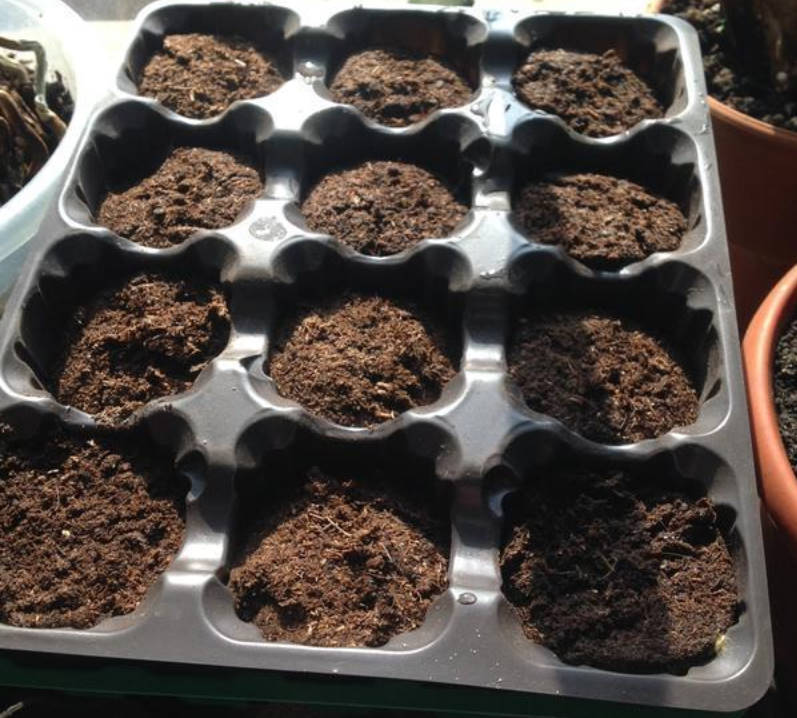
Peat tablets are preferable to pots
Recently, a method of growing seedlings by sowing directly into peat blocks or peat tablets (large) has become widespread, which are then planted in place, while the roots are not damaged. However, it is better to dive the pepper into the diapers of the film, and even better to grow it, immediately seeding of the film. Or to raise seedlings by sowing it in a paper cylinder without a bottom. All these techniques allow you to grow pepper without picking, which he does not tolerate.
Pests of seedlings
Sometimes the seedlings of pepper are damaged by aphids. This happens if the soil for the seedlings you take from the greenhouse or buy ready soil and it is not steamed, or you have indoor flowers in the same room as the seedlings.
To deal with aphids on the peppers is very difficult. Spray the seedlings with one of the biological preparations. Since spraying is done at the time of the pest attack, and not prophylactically, the dose should be doubled. Every 2-3 weeks the spraying will have to be repeated. The drugs are harmless to humans and animals.
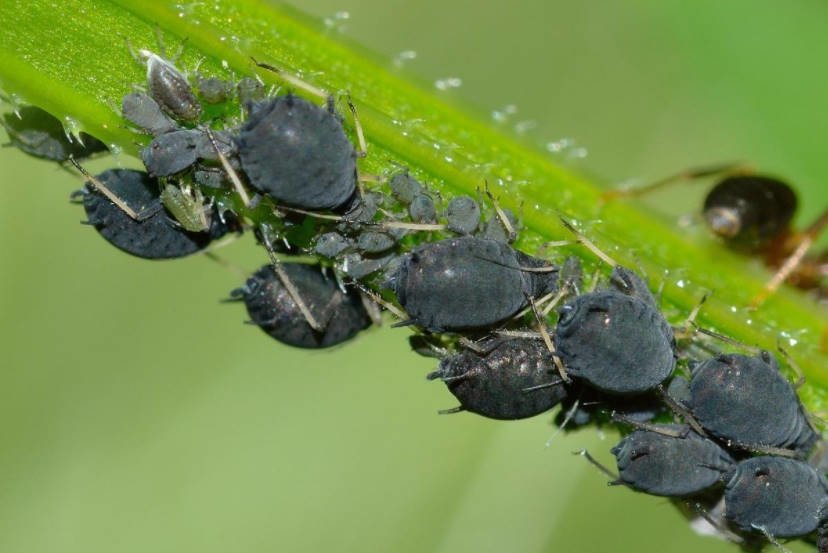
Sometimes the seedlings of pepper are damaged by aphids
You can, of course, just wash off the aphids with soap water or a solution of potassium permanganate of a bright pink color, but this will have to be done every 4-5 days.
Any seedling with the appearance she has 1-2 true leaves (cotyledonary leaves solutions don’t suck) very useful 1 every 10 days continuously sprayed.
Transplanting seedlings in a greenhouse or soil
Pepper grows in the open ground only in the southern areas, in the rest it has to be grown in greenhouses or low greenhouses.
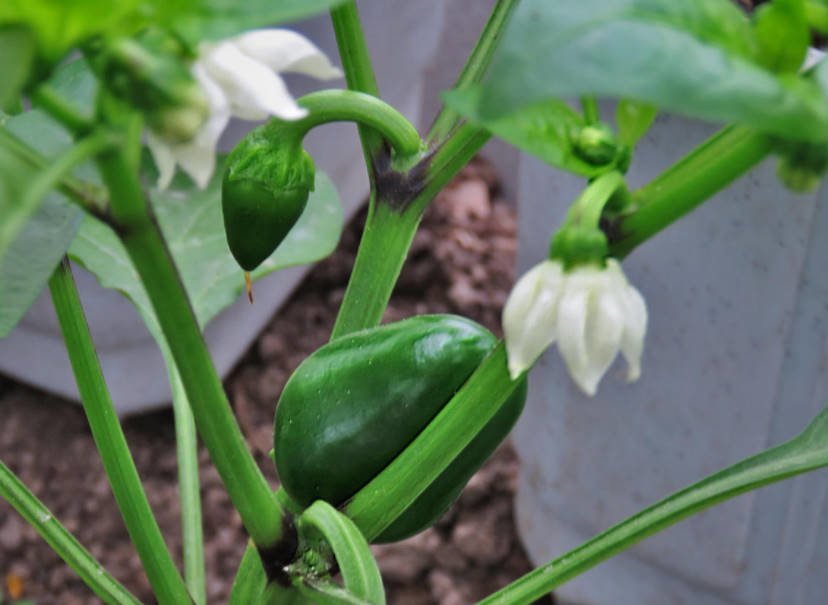
In most regions of our country pepper has to be grown in greenhouses or greenhouses
I usually plant peppers early, when there are still frosts, so I put over the landings crosswise the usual arc (height 80-100 cm) on a pair for each m2 of landings and cover with double lutrasil. If you grow peppers in greenhouses is low, then on top of dual has lutrasil be sure to cover the greenhouses and even film.
Pepper can be grown along the rows of tomato, then it will not be attacked by aphids. But pepper does not like tomatoes, and prefers to grow in the neighborhood with cucumbers. Better all the same pepper to grow in a separate small hothouse. In regions with cool summers pepper is also necessary to plant on the insulated ground. As a biofuel it is possible to take dry hay, leaves, untreated compost , but should not be used as manure, because the pepper will increase the aboveground part, but will not tie the buds. Moreover, if in the initial period of growth in the soil will be too much nitrogen, pepper will drop not only the ovaries, but also buds.
Feeding, watering
Indicator of well-being pepper is a lighter color of young leaves compared to the rest. Engraftment of seedlings is about 10 days. As soon as the next leaf-seedling took root and you can feed it with mineral fertilizers, taking half a tablespoon of urea, tablespoon of double granulated superphosphate and a tablespoon of potash fertilizer that does not contain chlorine, 10 liters of water, spending a glass for the plant.
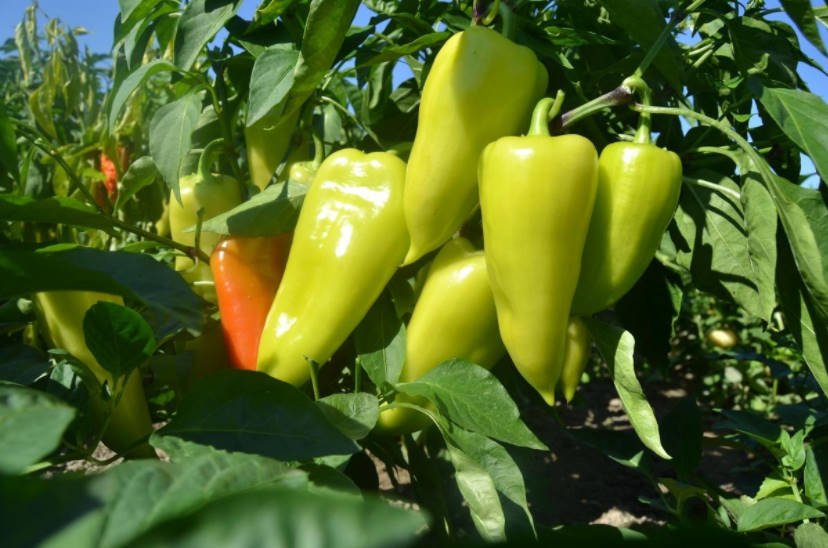
To obtain a good harvest of pepper need regular feeding and watering
In the future, feeding is done every 10-14 days, watered regularly, but moderately. Experience shows that it is better to water the pepper is not water, and a weak solution of fertilizer weekly as feeding and watering.
Grow pepper without watering, as tomato, of course, can not, because it does not tolerate the slightest drying of the surface layer of the soil. But mulch the surface of the soil under the planting of pepper is necessary.
The formation of pepper
Undersized varieties and hybrids can not tie up and do not form. Tall tie and it is necessary to form is also necessary. Gradually, it is necessary to remove all the leaves to the fork of the stem, constantly clean and all stepchildren to the fork. Sometimes in the fork formed by three stalks instead of two — third better to remove. All twigs and buds directed into the Bush, too, should be removed, as they thicken and shade the Bush, and the fruits of the internal buds grow ugly.
In the Northern regions have time to form 2-3 subsequent fork on each branch, so it is possible to remove the pepper 2-3 times from each Bush in the summer. At the end of July, all the buds and flowers should be cut, leaving only the ovaries, and pinch the ends of all branches to stop further growth. Then at the end of September there will be a lot of fruits, otherwise there will be one trifle, which did not have time to grow.
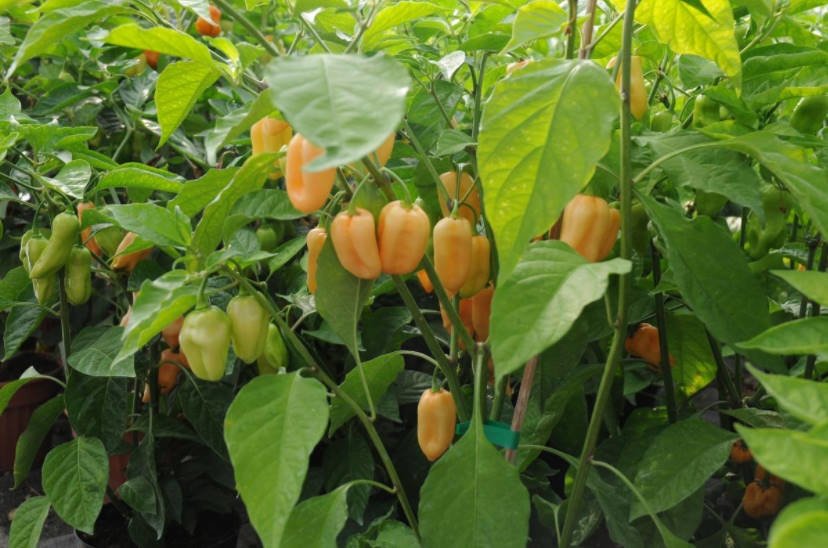
The need to form a Bush depends on the variety of pepper
In the fork of the Bush, a fruit is formed that produces a special substance-an inhibitor that inhibits the growth of the rest of the ovaries. If you want to get very large peppers or grow your seeds, then this fruit should be left and the seeds should be taken from it. If you want to get a lot of peppers, then this fruit should be plucked in the Bud stage as early as possible. At the same time, the fruits, of course, will not be very large, because the weight of the plant gives the same harvest: either small, but large fruits, or many, but small ones. The harvest should be normalized depending on the condition of the plant: on the strong — leave more fruit, on the weak — less, plucking buds or ovaries.
Varieties of Bulgarian selection are removed in the stage of technical ripeness. In this state, the pepper is already quite edible and well dosed to the stage of biological ripeness. Hybrids of Dutch breeding in the stage of technical ripeness tasteless and poorly dosed, so they should be removed not before the first stroke of varietal color, then they will reach. It is even better to grow them to the stage of biological ripeness right on the bushes, then they really have a wonderful taste!
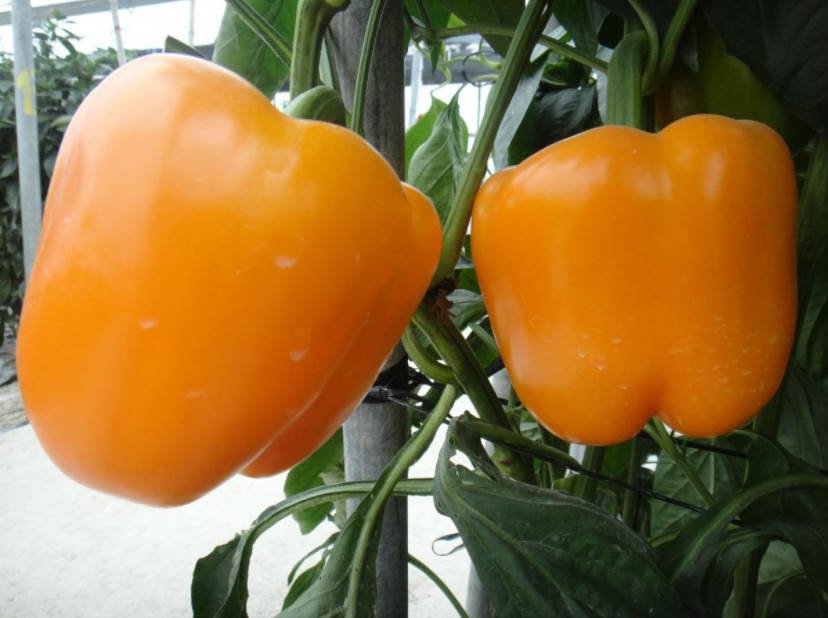
Ripe pepper on the Bush has a wonderful taste
As a rule, the peppers of Dutch selection are large — fruited thick-walled hybrids of late ripening. At home in the greenhouse, of course, it is necessary to have and early Bulgarian varieties, usually unpretentious and reliable, and several multi-colored Dutch hybrids to amuse the soul and please the eye. In the Northern regions, late varieties of peppers do not have time to ripen — to grow them, it takes about 7 months and a sufficient amount of heat.
Typical failures in the cultivation of pepper
1. Pepper does not give buds for a long time. You overfeed him with nitrogen fertilizers, including infusion of weeds or manure, which is generally contraindicated.
2. Pepper blooms, but does not form ovaries. Pollination does not occur at high humidity in the greenhouse, too high air temperature in the greenhouse, with a strong cooling (below +12°C). Spray them with solutions should be in the morning. Well ventilate in hot weather, heat the greenhouses with strong and prolonged cooling, water less.
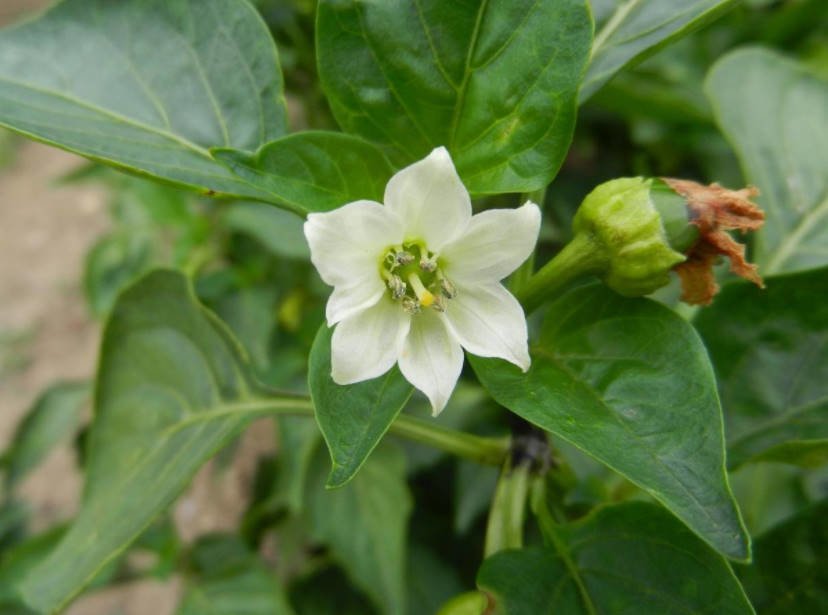
Not every flower becomes a fruit
3. With pepper crumble the flowers and even the ovary. The plant could get under frost; in the diet of excess nitrogen; too dry soil, and pepper, though not like excessive moisture in the soil, however, does not tolerate even the slightest drying of the roots; a sharp temperature drop day and night (more than 15°C); long-term cooling or watering with cold water. Shedding of the ovaries can be caused by the disease of fruit rot in the place of attachment of the fetus. Spray the pepper in the evening on the leaves with fertilizer.
4. The stem begins to rot, and the plant dies. It’s stem rot. Most often appears in thickened plantings with poor ventilation or high humidity, with prolonged cooling (below +15°C). When the first signs of the disease (white plaque) immediately stop watering, ventilate the greenhouses, remove all the leaves and Stepsons from the stems to the fork, thin the branches on each plant, remove the plaque with a cloth and cover the damaged area with a putty of chalk and potassium permanganate with water. Or wash with a strong solution of potassium permanganate and dust with ash.
Prolonged cold or sudden temperature changes or prolonged rainy weather let the peppers calcium and potassium fertilizer (2 tablespoons of calcium nitrate plus 2 tablespoons carbonate or potassium sulfate in 10 liters of water, the glass under the plant).
5. Twigs bare, rise up, withering leaves have a mosaic color, the fruits are ugly and woody. It’s a viral stolbur disease. Dig a Bush and burn it.
6. On the top or side of the fruit formed a bright spot, which then rot. It’s apical rot. She’s not a disease. The reason is the lack of potassium, calcium, water. Water, feed with potassium and calcium as above.
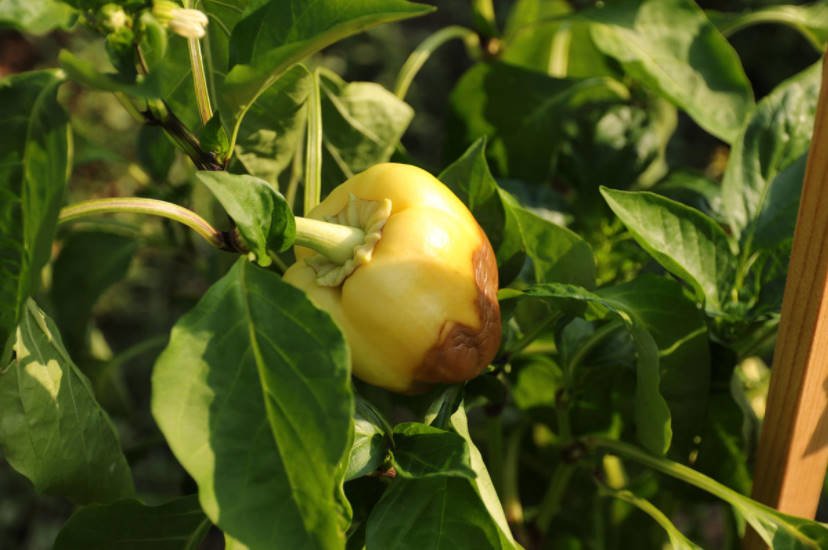
Apex rot of pepper
7. The leaves have a brown border or twist the boat up. It’s potassium deficiency. Give foliar feeding on the leaves in the evening (1 tablespoon of potassium nitrate or any potassium fertilizer without chlorine for 10 liters of water), and even better — to feed the leaves with fertilizer or pour under each plant on moist soil for half a glass of ash.
8. Leaves rise vertically upward. Lack of phosphorus. Feed with superphosphate (3 tablespoons per 10 liters of water).
9. All leaves, not just young, become lighter. Lack of nitrogen. Feed the infusion of weeds, diluting the infusion with water in a ratio of 1: 5, spending 0.5 liters under the Bush, or urea (2 tablespoons per 10 liters), a glass under the plant.
10. The main pest of pepper-aphids. How to deal with it, has already been said.
11. Often the leaves damage slugs, eating large holes. Nearly every stalk will spread out in a triangle at a single grain of metaldehyde or tie the lower part of the stem of the nettles. There is a simple folk remedy: half a Cup of 9% vinegar on 5 liters of water. Spray the plants and soil under them in the evening, when slugs and snails are sent to feed, and as vinegar acidifies the soil, then immediately sprinkle ash around the pepper.
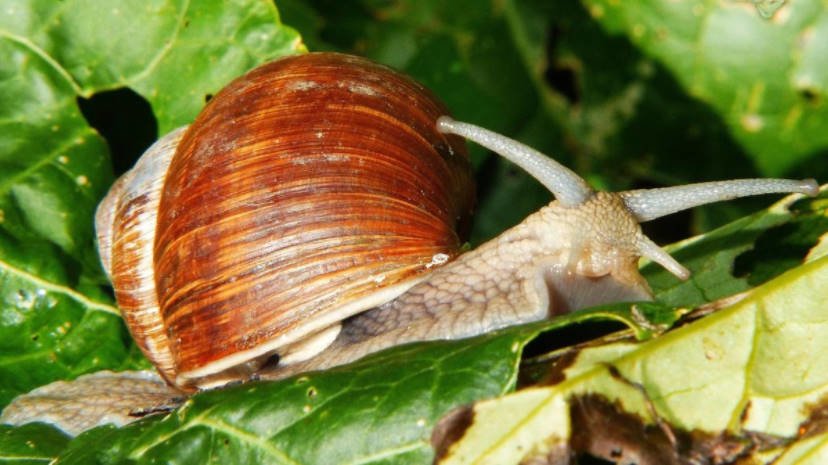
Snails and slugs frequently damage the leaves of the pepper
There is still a good folk way: spread out pieces of slate among the landings. During the day, turn them over and collect slugs that will settle under them to wait out the day. Slugs willingly eat chickens. But slugs are cannibals, that is, too, eat up their crushed relatives. So press them directly on the slate in the afternoon, leaving for eating. The next day will change and again the passing of those who crawled on the food. Gradually, you will catch them in this place. Slugs and snails from other places will not soon move here. For them, long trips are difficult.
Against all diseases of pepper should be carried out preventive spraying. Any disease is easier to prevent than to get rid of them.
Is it possible to plant a number of sharp and sweet varieties
Not, the ancestor of the sweet pepper is a hot pepper, so the cross-pollination all the peppers will turn bitter.
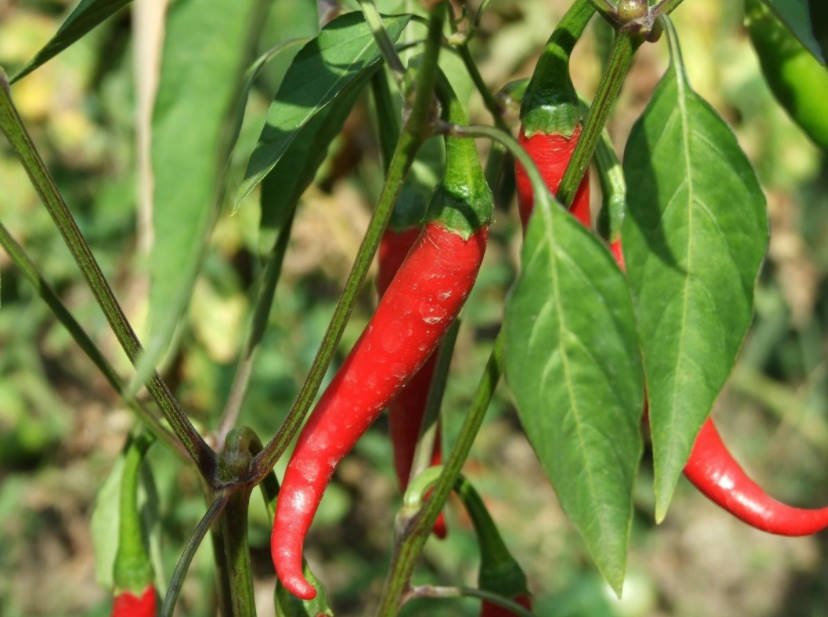
Hot pepper can not be planted next to the sweet
Can you grow peppers from their seeds
It is possible, but only varieties and not from hybrids. As already mentioned, the seeds are best left in the first fruit fork. When it is painted in the color that is inherent in this variety, cut the fruit, shake out the seeds and dry them.
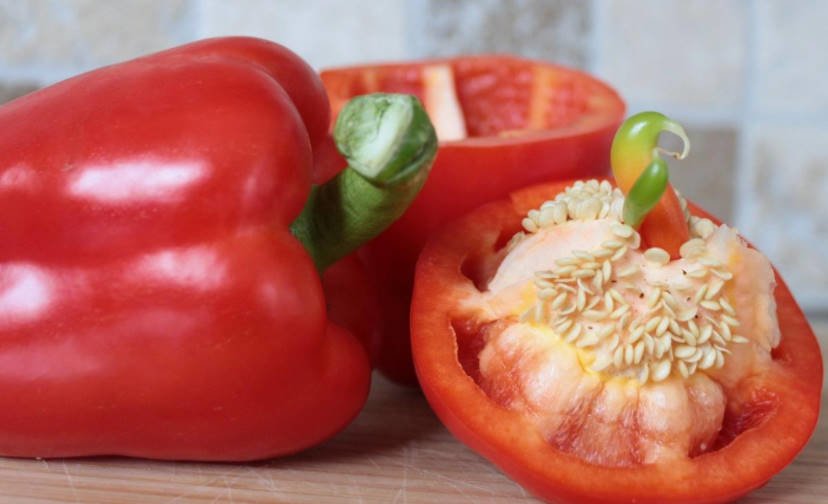
Not all peppers are suitable for seeds
The seeds of the peppers are not rinsed. Like tomatoes, the best peppers grow from their seeds. If the seeds are not ripe, when dried, they will darken and the edges are slightly wrapped — they, of course, will not ascend.
The fruit left on the seeds can be removed at the stage of the beginning of staining and allow it to fully Mature to the stage of biological ripeness. Seeds obtained from overripe peppers, as well as from overripe tomatoes, have poor germination.
